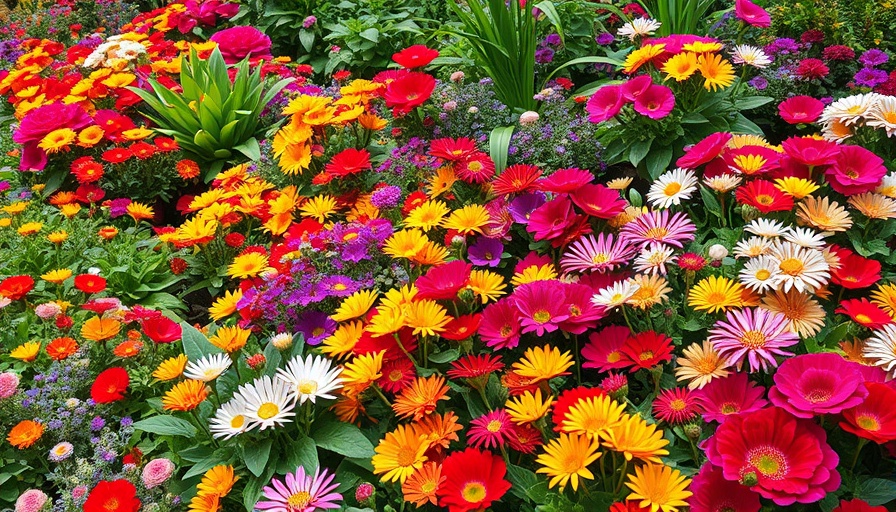
The Rise of Cramscaping: A Trend to Transform Your Garden
In a world where outdoor spaces are often limited, cramscaping offers a refreshing perspective on how we approach gardening. As homeowners increasingly seek to maximize their property’s aesthetics and functionality, cramscaping emerges as a design philosophy that emphasizes lush, densely planted gardens. This trend, rooted in creativity, innovation, and a deep understanding of horticulture, is capturing the attention of gardening enthusiasts everywhere.
Understanding Cramscaping: Beyond Just Planting
Defined simply, cramscaping is a gardening method that prioritizes planting a wide variety of flora closely together, leaving no bare earth visible. This concept, however, is not merely about cramming as many plants as possible into a space. It requires knowledge of the eventual sizes and needs of each plant to create a harmonious and thriving garden ecosystem. Loree Bohl, a key figure in this trend, emphasizes the importance of thoughtful arrangement to avoid the pitfalls of overcrowded gardens.
The Historical Context: How Cramscaping Came to Be
Cramscaping has its roots in traditional gardening practices that divide space thoughtfully while maximizing plant variety. Early adopters like Sean Hogan and Loree Bohl refer back to the 1990s as the decade where this term first took off. Hogan describes his first usage of the term while showcasing impressively dense container gardens. As gardens evolved, so did the concept of cramscaping, whereby gardeners began to revolutionize how we view and utilize limited outdoor spaces.
Why Cramscaping Resonates Today
As urban living spaces shrink and gardening becomes a more communal activity, cramscaping reflects a broader societal shift towards sustainability and ecological gardening. The trend resonates with homeowners who want vibrant, productive gardens even in limited spaces—encouraging wildlife, reducing weed issues, and improving overall aesthetic values.
The Emotional Connection: How Does Cramscaping Make You Feel?
For many, cramscaping becomes a form of self-expression and a sanctuary—a way to bring joy and relaxation into busy lives. Bohl describes sitting in her own dense garden, enveloped by nature, emphasizing the emotional benefit that comes from being surrounded by a rich tapestry of greenery. Gardens designed with cramscaping in mind can provide not only visual delight but also a therapeutic escape, connecting individuals with the natural world.
Keys to Successful Cramscaping
To embrace cramscaping effectively, homeowners should consider several important factors. First, understanding the growth patterns, light requirements, and compatibility of plant species is crucial. Research needs, soil health, and seasonal variations also play significant roles in creating a successful cramscape. By anticipating these factors, gardeners can prevent the chaos that might result from poorly chosen plant combinations.
Practical Insights: Getting Started with Cramscaping
Ready to try cramscaping? Begin by mapping out your garden space and selecting plants that thrive in your climate. Layering plants with varying heights can add depth, while incorporating perennial species can ensure longevity. A combination of foliage textures, colors, and blooming times will create a dynamic and engaging landscape that changes with the seasons.
Future Predictions: The Lasting Impact of Cramscaping
The cramscaping trend shows no signs of slowing down. With increasing awareness around sustainability, biodiversity, and the mental health benefits of gardening, more homeowners will likely adopt this approach. As the lines between indoor and outdoor living continue to blur, we can expect cramscaping to play a pivotal role in redefining our interaction with nature.
Final Thoughts: Your Next Steps in Cramscaping
As you reflect on these insights about cramscaping, consider how it can be implemented in your own outdoor spaces. Whether through garden beds or container gardening, this stylish approach nurtures not only plants but also the creativity of those who cultivate them. So, grab your gardening gloves and take the plunge into the world of cramscaping—where every inch of earth is nurtured, and every plant has its place.
 Add Row
Add Row  Add
Add 




Write A Comment